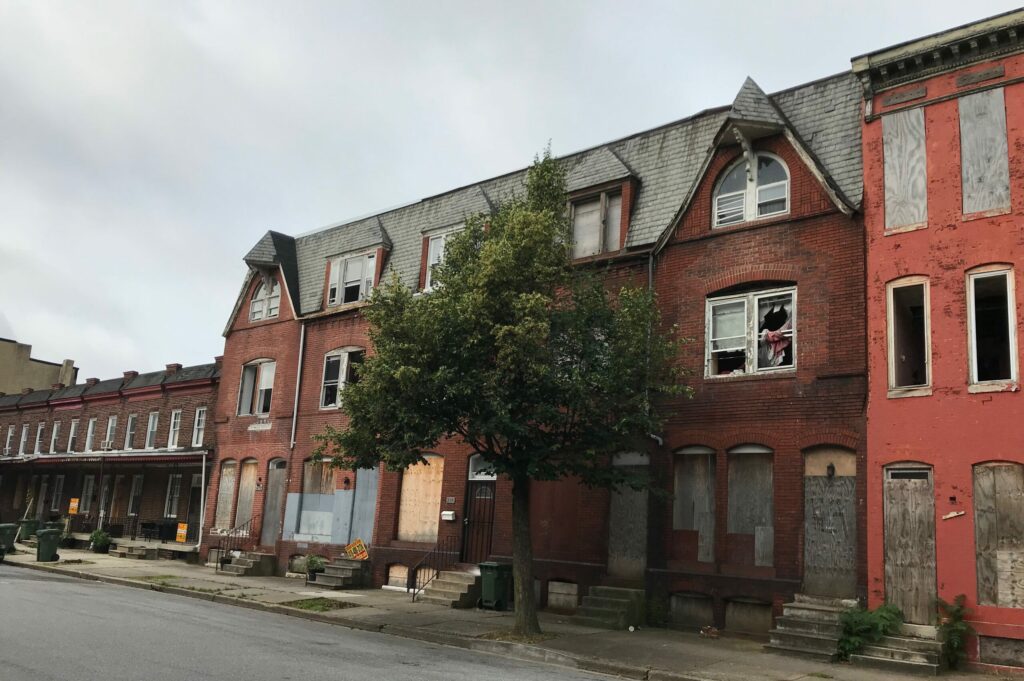The fire that tore through a vacant rowhouse in West Baltimore in January and killed three firefighters trapped inside cast an urgent, tragic light on the challenges posed by vacant houses in Baltimore. It also sparked renewed questions about the scope and scale of Baltimore’s vacant housing problem and how to address it.
In The Costs of Baltimore’s Vacant Housing, Mary Miller and Mac McComas of Johns Hopkins 21st Century Cities Initiative estimate that Baltimore’s vacant housing accounts for at least $100 million in lost tax revenue annually and an additional $100 million in annual public expenses. These costs are magnified by public health impacts on residents and heightened crime, less measureable effects but also very real costs. In Baltimore, these costs are also highly inequitable as they are largely borne by majority Black neighborhoods and Black homeowners.
With research support from Abell and the Robert W. Deutsch Foundation and utilizing data from the Baltimore Neighborhood Indicator’s Alliance and Open Baltimore, the report argues that understanding the true costs of vacant properties is the first step in developing a broader economic plan for increasing residency in the city.
The report’s findings include:
- The city’s recorded inventory of 15,000 vacant properties is dynamic, with properties entering and leaving vacancy every year, but hovering between 7 and 8% of total city properties. The number of total unoccupied properties is much larger, but includes housing in habitable condition.
- Vacants cost the city at least $100 million in lost revenue annually. The depressed value of vacant properties creates a shortfall of potential property tax revenue of approximately $50 million each year, with an additional $22 million loss attributed to the “contagion effect” on the value of nearby properties. The city could also benefit from at least $24 million in additional income tax revenue and over $12 million in additional water and sewer revenue if 15,000 vacant properties were occupied.
- While the city directly owns only 10% of the vacant property stock today, it’s responsible for nearly all of the expenses related to these properties. The authors identified over $100 million in directly identifiable operating and capital expenses for vacant properties in the 2022 budget, with more expenses embedded in broad agency budgets that can’t be separated out.
- An increase in vacant properties in a neighborhood is associated with additional 911 calls and additional calls for 311 services each year. Similarly, an increase in vacant properties is associated with additional violent crimes and property crimes, which exact additional costs on the city and on residents.
- There are significant public health costs associated with vacant properties such as lead poisoning, asthma (from mold, vermin, and droppings), and poor mental health outcomes. An accurate measure of these costs would increase the authors’ estimates significantly.
While the costs of rehabilitation vary widely, the estimated cost to close the gap between rehabilitation costs and sales price is below the annual lost revenue and cost the city is currently incurring.



